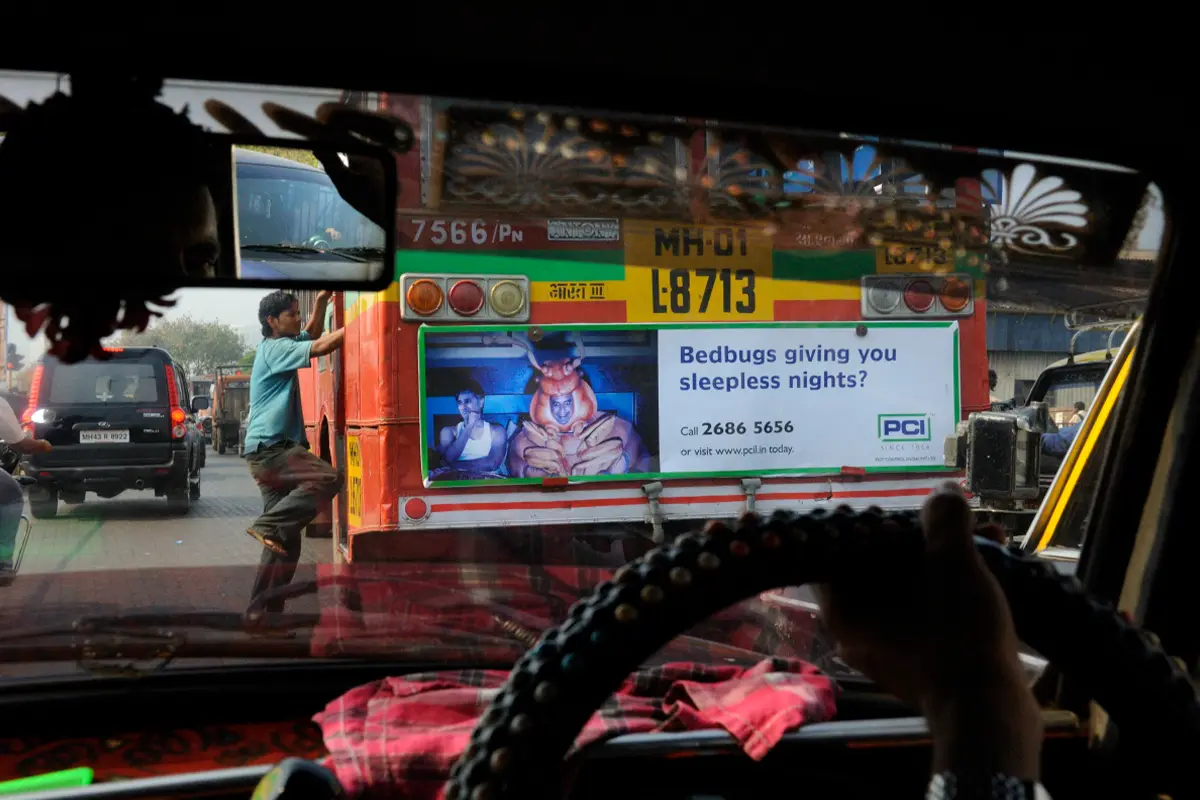The Internet cultural humor surrounding the bed bugs in Paris grows from the contrast between the glossy, picture-perfect idea of Paris and the reality of living and working in a complex city
Bed bugs panic has spread or just an Internet psychosis? – Facing the digital reaction
Until last month, bed bugs were likely the least probable thought to pop into the mind of any tourist fresh off the gates of Charles de Gaulle airport and on their way to visit la Ville Lumière.
Now that the Bed bugs panic has spread like wildfire on internet and social media, causing as much hilarity as fear, these insects are probably a tourists’ primary concern, topping classics like losing your passport or getting lost in an unfamiliar neighborhood.
Unlike what the mountain of Paris bed bug-related content on the Internet might have led us to assume, bed bugs aren’t exclusive to Paris or the protagonist of a recent outbreak, as they have been having what experts call ‘a resurgence’ during the past two decades on a global level.
The effects of climate change might also be altering the way insects behave, with unusual weather patterns significantly influencing the phenology of adult insects and insect pests seeming to have larger populations under climate change.
«Bed bugs are found globally – there will already be bed bugs in the UK, just as there are in Paris. Bed bugs are good hitchhikers and could easily be brought from Paris to the UK, but could just as easily go from the UK to Paris! It is unlikely that Paris is significantly worse than other places, although they may be unlucky right now with a bit of a bed bug boom». Said James Logan, Professor of Medical Entomology and Director of Arctech Innovation at the London School of Hygiene & Tropical Medicine (LSHTM) to the Science Media Centre.
Bed bugs in Paris – a timeline reportage. From Punaises de lit to the era of the collective digital psychosis
Punaises de lit, as they are called in French, aren’t anything new in Paris and beyond, with the first evidence of bed bugs interacting with human beings coming from an archaeological site in Egypt, which dates back to about 3,550 years ago. These days, these common ectoparasites can be found in more than fifty countries, including all regions of the world, anywhere from Europe to the United States, and as their classification implies, they feed on blood.
As they host more than forty infectious agents, running into these insects can have several health consequences, ranging from physical to psychological. Due to their resilience to many pesticides, the lack of alternative efficient control measures, and their tendency to conceal and reproduce in even the smallest human-inhabited spaces, bed bugs are some of the most challenging insects to eradicate.
According to American entomologist Michael F. Potter, in England, bed bugs were first documented in 1583 and quickly spread during the 1600s and 1700s while they made their way to the American continent through the British colonizers. Bed bug populations then declined for several decades following the 1940s discovery of organochlorine DDT. In the past few weeks, bed bugs panic has become the internet’s favorite topic. Through digital reaction, videos shared online show the ectoparasites hanging out in both public spaces, like on the seats of Paris’s trains, buses, and even cinemas, as well as private lodgings like hotels and Airbnbs.
This frenzy prompted the Minister Delegate for Transport of France, Clément Beaune, on September 29th to announce on X, formerly known as Twitter, that he would have brought together transport operators the following week to provide information on the actions undertaken to tackle the issue.
This situation is happening ten months before the next Summer Olympic Games, which will be taking place this summer in the French capital between Friday, July 26th, 2024, and Sunday, August 11th, 2024, bringing millions of visitors to the ‘City of Light’, making this an unpleasant time for the authorities to be dealing with a sanitation crisis, whether real or perceived.

Internet culture reportage – the Bed bugs in Paris and the cultural humor
Like many other big metropolises, Paris can be described as a polarizing city, satirized and criticized as often as it gets romanticized. Online and offline, people will say that Paris is dirty, overrated, overpriced, and smelly. Yet the World Trade Organization (WTO) anticipates that there will be two billion tourists visiting Paris in 2030 and three billion in 2050.
In a way, Paris shares the same fate as New York City. Both are cities with an incalculable impact on Western culture and arts, the backgrounds and subjects of an endless list of songs, movies, and novels, and cities dealing with the issues that come with massive tourist flows and their deep-seated socio-economic challenges.
Speaking about digital reaction towards happenings, the Internet cultural humor surrounding the bed bugs in Paris grows from the contrast between the glossy, picture-perfect idea of Paris that non-locals can have of the city and the reality of living and working in a complex place with its idiosyncrasies and issues. Digital reactions spread all over the web.
This cultural humor is a product of its time, too, as we have seen Gen Z becoming notorious in the past few years for its penchant for dark humor and using irony as a way to cope with the many ‘unprecedented’ events this generation had to deal with in the course of their adult lives. The downside of this humor is the risk of magnifying or distorting an issue whose beginning can be traced way further back than this summer.
Has there been a bed bug outbreak in 2023? About Internet culture and the spread of panic and the digital reaction to social fear and phenomena
After the decrease in Bed bug numbers that took place in the mid-twentieth century, the last two decades have seen a resurgence of the common bed bug and the tropical bed bug.
In the 2023 study reportage titled Historical and Contemporary Control Options Against Bed Bugs, Cimex spp Stephen L. Doggett and Chow-Yang Lee of Westmead Hospital in New South Wales, Australia, and the Department of Entomology of the University of California published in the Annual Review of Entomology analyzed the global resurgence and management options of bed bugs.
From the study, it emerged that not only that, in the last twenty years, bed bugs have become more widespread, but that this resurgence has impacted every type of space inhabited by humans, ranging from airplanes to healthcare facilities. In the United Kingdom, Bed bug infestations have increased by sixty-five percent between 2022 and 2023, according to UK pest management company Rentokil Pest Control.
The culprits behind this Bed bug resurgence have been identified as the insecticide resistance developed by these insects, which limits the chemical control management options, and the increase of global travel, which has helped these resistant breeds spread around the globe.
These hematophagous urban insect pests can be transported by tourists via their clothes and luggage, which allows bed bags to make their way across entire seas and continents. The dirty laundry many people carry home from their trips seems to specifically appeal to these insects. A 2017 reportage study on this phenomenon conducted by researchers from the University of Sheffield published in Scientific Reports showed the number of bugs drawn to the unclean garments was around twice that of the clean ones.
Hematophagous urban insect pests and the Internet psychosis
«Reports of Bed bugs have been increasing for many years, both in the UK and many other countries, probably in the main because of their developing resistance to insecticides. The five immature stages (nymphs) need a blood meal in order to develop to the next stage, and adult bed bugs can live up to a year.
As far as we know, bed-bugs do not carry any human disease, and their bite is painless but can leave an itchy red mark. Bites often show up as a straight row of three or four – I once woke up with a line of raised bites across my chest in a hotel in Ethiopia, with no ill effects. (I found this experience quite interesting, although I can see that others might not)». Said Professor Robert Smith, Professor Emeritus at the University of Huddersfield, to the Science Media Centre.
«Bed Bugs mostly feed at night and hang out in cracks and crevices during the day. I no longer use drawers in hotels to avoid picking up bed-bugs as they can quite easily hitch a ride in luggage. Hence, they can travel between countries in luggage and are widespread. I wouldn’t worry about them, but would advise avoiding unpacking clothes as far as possible in hotels. Some people even advise storing your suitcase in the bathtub, though I don’t go that far».
Global travel and insecticide resistance are not the sole anthropogenic factors affecting how insects as a whole can behave, as a number of vector-borne diseases’ global distribution is being impacted by climate change, which can result in the introduction of infectious diseases in historically non-endemic regions.
LSHTM – The London School of Hygiene & Tropical Medicine
The London School of Hygiene & Tropical Medicine (LSHTM) is a center for research and postgraduate education in public and global health located in Bloomsbury, London.



















